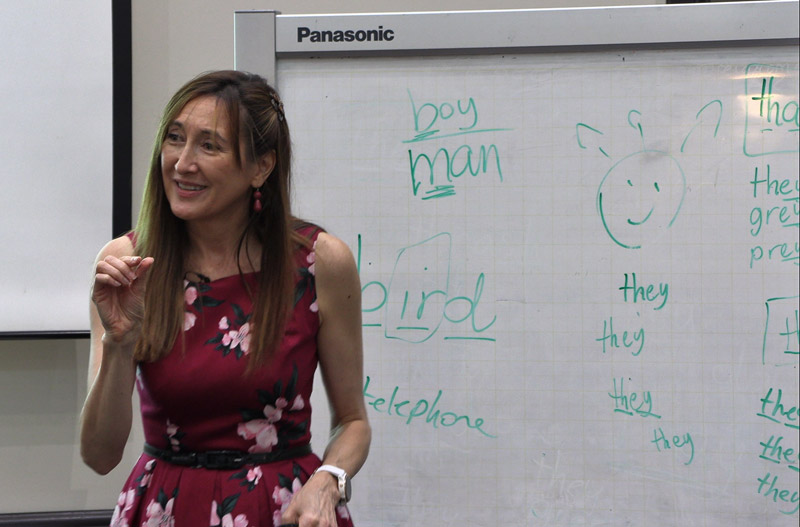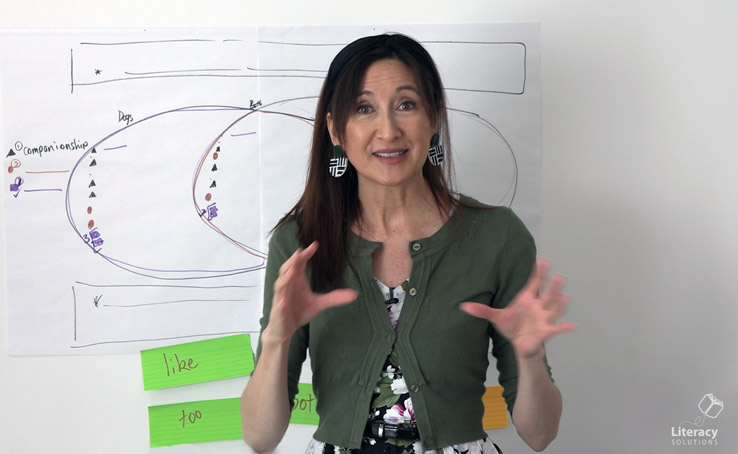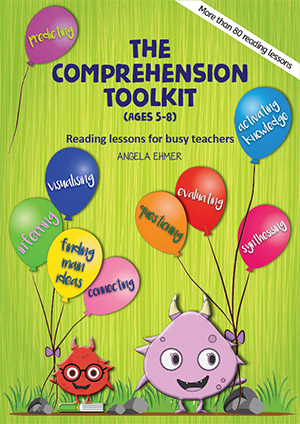Top 10 practices of highly proficient teachers of reading
How do we improve reading outcomes for students? What do highly proficient teachers of reading do? Here’s my Top Ten list . . .
- Gather regular, ongoing records using both formal and informal measures on continuous text; analyse strategic behaviour on errors and self-corrections, make observations about elements of prosody and fluency and assess comprehension; determine skills and knowledge controlled and absent; identify patterns of behaviour
- Analyse and use data to inform planning; identify short and longer term goals for students (i.e. end of week / month / term / year); identify clear instructional goals for large and small groups and individuals
- Select texts for read aloud, shared reading and guided reading to strategically support the teaching/learning and application of instructional goals
- Plan concise, targeted teaching episodes using read aloud or shared reading; identify the instructional goal to students; teach rigorously
- Link instructional goals to both reading and writing. i.e. Explicitly model and teach for reciprocity. e.g. “Now that we know how to use a ‘silent e’ to spell words, we must remember this for solving tricky words in reading.”
- Provide expectations for active participation by students; include students in focused talk to describe and explain the instructional goal, discuss the application of the instructional goal on authentic texts and generalise how and when key principles apply to other text solving situations
- Provide strategic support as students practice applying the teaching goals during guided reading. e.g. How did we solve those difficult words earlier? You should try that on a tricky word coming up.
- Listen to students read during guided and independent reading to monitor reading behaviour; gather ongoing data to refine or modify instructional goals and teaching/learning sequences to suit student needs
- Provide daily opportunities for students to practice reading using easy or familiar texts
- Provide regular, specific feedback to students about problem solving behaviours observed during reading, e.g. application of strategies/strategic behaviours/skills/knowledge used and neglected (remembering that a high volume of praise should be offered at success and corrective feedback limited to one teaching point).
Even for experienced teachers, there’s value in reminding ourselves of each of these core principles. By exercising these and other best practice behaviours, we give students the best chance for success.





Thank you Angela. This is a great checklist for all teachers teaching literacy. We are just putting together a toolkit for a school wide literacy program and I would love to add this for teacher guidance and reflection on practise.
Annette
Hi angela – as a trained reading recovery teacher, these are the very guidelines followed by the program and hence its success especially the daily practise of reading familiar texts for confidence and practise, and fluency and the specific targeting of instructional skills needed. Another most important strategy is not to start at book one and move numerically through the readers but select the readers that will reinforce the skill you are targeting that lesson. eg if you are skilling ed /ing endings on words look for a text at that level with many examples so there are lots of opportunities to practise. I think we become too secure/stuck in a rut of moving methodically through rather than searching out alternatives.
Regards
Sue
Thanks Sue. That’s correct. Reading Recovery is focused, or based around ongoing assessment and monitoring, combined with students’ interests and experiences. It is rigorous and includes ongoing repetition of key learning principles. It is extensive. It offers instruction which targets individual needs and which links to other learning environments and is therefore, synonymous in reinforcing the key learning principles. Finally it is scaffolded. Student learning is supported, consolidated and extended.
Your point about text selection and skilling using texts which feature the instructional goal, e.g. ed/ing endings, is an important one. Rather than selecting texts by availability, we should find texts which meet the instructional goal. Numbers 3 and 4 of the Top Ten Practices address this point. That is, select a text which allows for rigorous teaching of the instructional goal. Then teach with rigor.
Your mention of moving numerically through texts is a valuable reminder for us to take care when using Reading Recovery levels for classroom programs. It must be remembered that these levels were designed to scaffold the hardest to teach children. The gradient of difficulty between levels is only slight. The levels were not intended for mainstream classroom use and great care must be taken, not to be restricted by them. Monitor progress by observing reading behaviour and listening to reading, i.e. how it sounds. Remember that it is normal for students to skip levels as proficiency grows and there is no set time to spend at a level.
Finally, there is great urgency to move students in the first year of school who are still reading at levels 1 or 2. Increase the scaffolding provided to enable these students to read texts above this level. Level 1 texts support the development of one to one matching and directionality; level 2 develops return sweep. Once these are controlled, we need to move these students on.
Thanks .. would love to also see specific examples and supporting details of some of the above summary points.
Selecting the appropriate texts for the students in your class is a valuable reminder. Angela, what are your views on using reading schemes in a Preparatory classroom where children are grouped into ability based reading groups as they would be in a Year 1 classroom?
Agree with comments above about Reading Recovery. Also I found a huge learning curve for me was to continually allow students to re-read familiar books to encourage fluency, almost sing-songy is great as students are becoming more familiar with those sight words, never was a need for sight word lists in RR probably because of this. Maybe make up a box so children can access these books to read at any time.
Hello Deidre
Some children will be ready and enthused to begin reading during prep. Others not so. Some will be ready, but showing no interest. It is important that we keep in mind what prep is all about. Yes, we use our observations to plan according to student need and interest. But it is and should remain a play base program. That said, if some children are ready and keen to read, we support them. If ready, but not interested, should we be pushing (Or is this just pushing the curriculum down and imposing it on children?). Some children will not be ready or keen at all during the prep year.
We have a wonderful opportunity to teach for phonological knowledge, including phonemic awareness, and can easily do so via reading, language games and more strategic play. Investing time here is vital in order to lay the foundation for formal literacy instruction.
I hope that helps.
Agreed!
Prep should be a play based program.
The value of play as a vehicle for learning literacy skills cannot be underestimated. In current times when we use the social/cultural model of language to frame our literacy teaching practice we know that our students act out the various genres of our culture through their play. ie: shopping, a footy match, a birthday party. There are ample opportunities here for teachers to explicitly teach their prep students about the literacies involved. (shopping lists,reading catalogues, signs for a footy match, team colours, numbers,scoring, invitations, programs,lists etc.)They not only learn the codes (spelling, writing, letter id etc) they understand the purpose for learning those codes. The teacher can feed in any texts which she feels will add to the student learning.
The idea of home readers in prep needs to be carefully considered. Are busy parents going to spend their precious time with children reading the ‘home reader’ at the expense of reading ‘quality literature?’
Those children who are ready to read can just as easily learn to read ‘The very hungry caterpillar’ as a very boring basal level one reader. We need to be careful not to dumb down our preppies’ reading experiences. A reading program that emphasises parents reading quality literature to children on a regular basis would be more beneficial in my opinion.